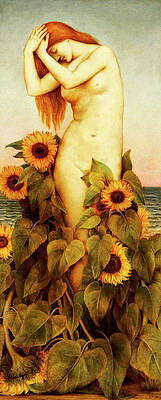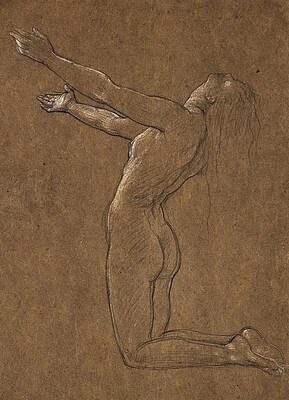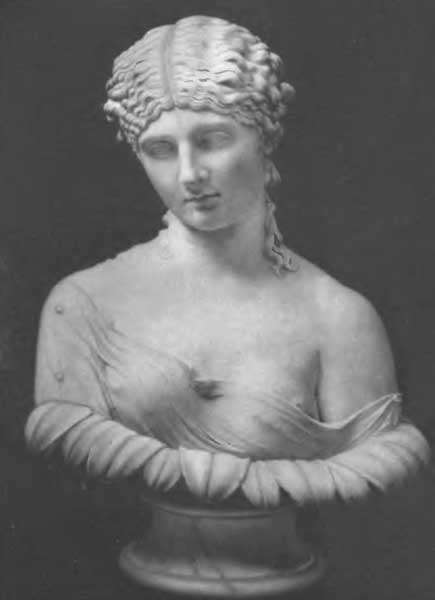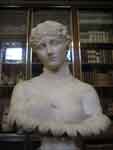.
Clytia, or Clytie, was a water nymph, daughter of Oceanus and Tethys in Greek mythology. She was loved by Apollo.
Narrative
Apollo, having loved her, abandoned her for Leucothea and left her deserted. She was so angered by his treatment that she told Leucothoe's father, Orchamus, about the affair. Since Apollo had defiled Leucothea, Orchamus had her put to death by burial alive in the sands. Clytie had wanted Apollo back and had wanted to win him back by taking away his new love, but her actions only hardened Apollo's heart against her. She sat naked, with neither food nor drink, for nine days on the rocks, staring at the sun, Apollo, and mourning his departure. After nine days, the suffering turned her yellow and brown, and she was transformed into a sunflower (some researchers claim heliotrope or marigold), which turns its head always to look longingly at Apollo's chariot of the sun. This story is told in Ovid's Metamorphoses, 4.
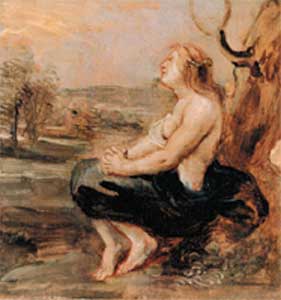
Clytie Grieving, Peter Paul Rubens, 1636
Clytie, Evelyn De Morgan
Study for Clytie, Frederic Leighton

Marble bust of 'Clytie' Roman, about AD 40-50, British Museum
Bust in the Townley collection
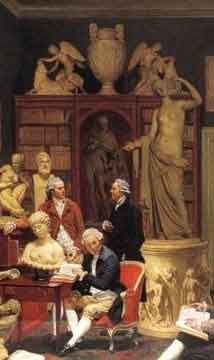
Towneley's Bust of Clytie (left, on the table)
One sculpture of her is a classical one in the collection of Charles Towneley.[1]
It is of about AD 40-50. Townley acquired it from the family of the Principe Laurenzano in Naples during his extended second Grand Tour of Italy (1771-74) - they insisted it had been found locally. It remained a favourite both with him (it figures prominently in Johan Zoffany's iconic painting of Townley's library, was one of three ancient marbles Townley had printed on his visiting card, and was apochryphally the one which he wished he could carry with him when his house was torched in the Gordon Riots - apochryphal since the bust is in fact far too heavy for that) and with the public (Joseph Nollekens is said to have always had a marble copy of it in stock for his customers to purchase, and in the late nineteenth century Parian ware copies were all the rage[2]).
The identity of the subject, a woman emerging from a calyx of leaves, was much discussed among the antiquaries in Townley's circle. At first referred to as Agrippina, and later called by Townley Isis in a lotus flower, it is now accepted as Clytie. Some modern scholars even claim the bust is of eighteenth century date, though most now think it is an ancient work showing Antonia Minor or a contemparaneous Roman lady in the guise of Ariadne.
Bust by George Frederick Watts
Another famous bust of her was by GF Watts.[3] Instead of Townley's serene Clytie, Watts' is straining, looking round at the sun.
Further reading
Bullfinch, Thomas. The golden age of myth and legend. Wordsworth Editions Ltd., 1993. ISBN 1-85326-307-9. page 129.
See also : Greek Mythology. Paintings, Drawings
| Ancient Greece
Science, Technology , Medicine , Warfare, , Biographies , Life , Cities/Places/Maps , Arts , Literature , Philosophy ,Olympics, Mythology , History , Images Medieval Greece / Byzantine Empire Science, Technology, Arts, , Warfare , Literature, Biographies, Icons, History Modern Greece Cities, Islands, Regions, Fauna/Flora ,Biographies , History , Warfare, Science/Technology, Literature, Music , Arts , Film/Actors , Sport , Fashion --- |
Retrieved from "http://en.wikipedia.org"
All text is available under the terms of the GNU Free Documentation License

